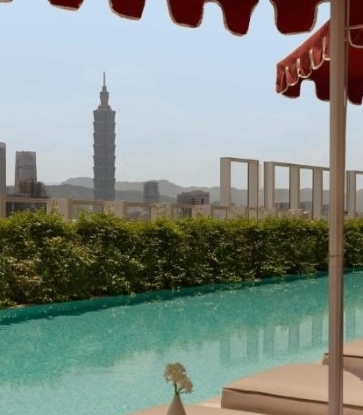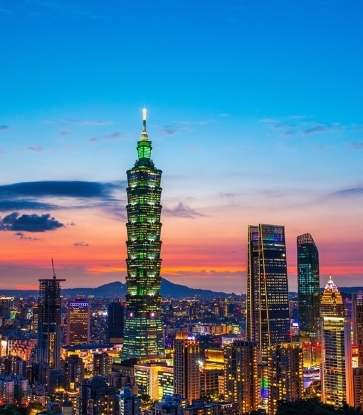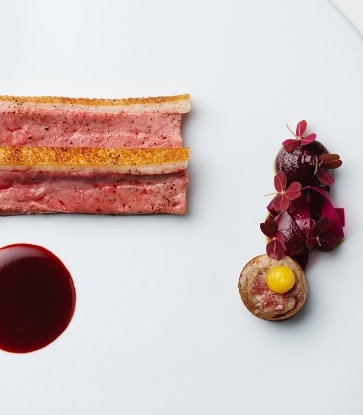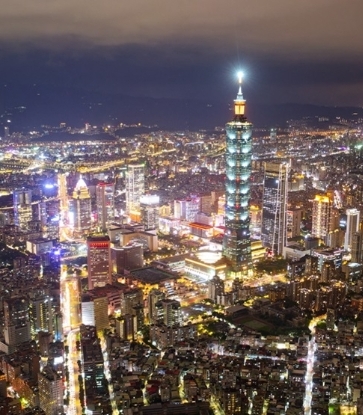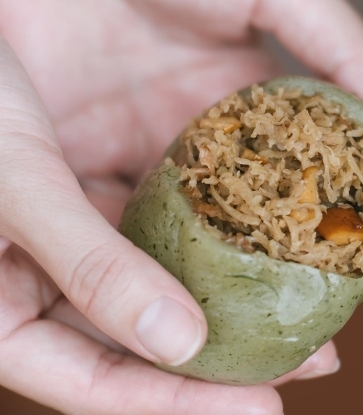Fujian by Birth
The tieguanyin tea grown in Taiwan actually originated from Fujian, which boasts more than 1,500 years of tea plantation history. On the rocks of the Lotus Peak in the provincial capital Fuzhou, there are texts carved way back in the Eastern Jin Dynasty (376AD) describing the local tea culture. Three centuries later in the Tang Dynasty, the “Sage of Tea” Lu Yu recognised Fuzhou and nearby Jianzhou as important tea production areas in his written work The Classic of Tea. Several tea varieties made there were sent to the royal court for the emperor’s consumption. Fujian tea stayed popular in the time following that, taking advantage of the rise of tea-growing competition and advancements of plantation and tea making techniques.

The Taiwanese Style
Taiwanese oolong takes root from Anxi, Fujian. Legend has it that it was the students applying for the government entrance exams who introduced the sprouts of the tea plant and techniques of tea making to Taiwan. During the Japanese occupation, the Japanese hired masters in tea making from Fujian to improve the oolong’s flavour profile and preparation process. The cross-straits interaction ended at the end of the civil war. With a limited variety of tea plants available, Taiwanese tea took inspiration from the production techniques of wuyi tea in Northern Fujian and tieguanyin tea in Southern Fujian. The result, oolong tea is something that is surprisingly original.

A Craft of Experience and Technique
In terms of the preparation process, Fujian oolong goes through many stages of treatment. Those include sun-drying, air-drying, shaking, frying, kneading, first roasting, second roasting, re-kneading and other steps. On this foundation, Taiwanese oolong modifies the roasting and kneading procedures and adds a re-fermenting stage, all of these resulting in its unique quality.
Since China and Taiwan tightened their connection in recent years, tea drinkers in the Greater China region enjoy easier access to teas produced from both sides, and are able to forge a better understanding towards the tea drinking habit from both sides too.

Oriental Beauty Oolong Tea
Also known as white tip oolong tea, its special flavour comes from the biting of a small local cicada on the young tea leaves in summer. Thanks to that, the brewed tea carries a honeyed sweetness and fragrance of ripe fruit. Oriental Beauty is semi-fermented and exclusive to Taiwan. The main production areas include the districts of Pinglin and Shiding, as well as the towns of Beipu and Gongguan.
High Mountain Oolong Tea
High mountain oolong tea refers to the oolong grown at least 1,000 metres above sea level. It is usually cultivated in new tea-growing regions like Chiayi and Nantou counties, from which there are tea plantations as high as 1,400 metres above sea level. Because of the altitude, the leaves grow more slowly. And for this reason, the taste of the tea becomes less bitter and more rounded. It has gradually turned into the dominant variety among Taiwanese oolong, appreciated for its refreshing character and body. It’s also interesting to compare the nuances among the high mountain oolong from various micro-regions.
Tung-ting Oolong Tea
Tung Ting is a mountain in Lugu, Nantou County, where the tea is cultivated and is also one of the earliest tea-growing areas in Taiwan. This semi-fermented tea is made from soft-stemmed (or “green-hearted”) oolong tea plant, and has a typical semi-spherical shape. The fermentation and roasting time is generally longer to create a deeper flavour with strong aftertaste.
Red Oolong Tea
Red oolong tea wasn’t born until 2008 in Luye, Taitung County. Taking cue from the black tea planted around Taitung and Hualien, red oolong adopts the fermentation method of red tea, combining that with the frying procedures of traditional oolong. As such, the brewed tea has a darker shade close to black tea. The smooth tea liquid has a soothing sweetness and fruity fragrance.








